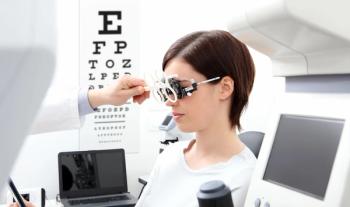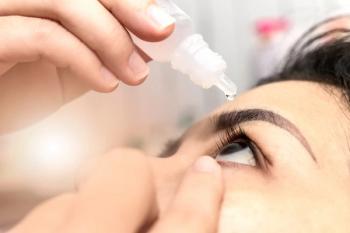
Minimize complications, maximize success
When considering PRK and LASIK, a standard pre- and post-procedure drug therapy regimen is important to minimize complications of the procedures.
"LASIK and PRK are more successful than ever. But no matter how technologically advanced we get, we still need proper optometric management from a human perspective," said Dr. Morgenstern, clinical director, TLC Laser Eye Centers, Washington, DC, region. "Without a great, caring optometrist taking care of a refractive surgery patient's needs on a daily, weekly, and monthly basis, you're not going to have a happy patient."
Dr. Morgenstern offered pre- and postoperative treatment regimens specifically designed to minimize the complications and maximize the success of the two procedures.
One week prior to surgery, patients are advised to add 1,000 mg of vitamin C per day to their diets. This will continue 6 to 8 weeks following the procedure.
The day prior to the surgery, Dr. Morgenstern recommended starting treatment with gatifloxacin ophthalmic solution (Zymar, Allergan), and continuing it for 1 week after surgery.
The night before and the morning of the surgery, patients are instructed to take one dose of gabapentin (Neurontin, Pfizer) to minimize pain. Patients who are taking cyclosporine eye drops (Restasis, Allergan) should discontinue using the drops the night before surgery, and resume once the bandage contact lens is removed.
PRK postop treatment
Following the PRK procedure, patients continue to take the gatifloxacin for approximately 1 week, gabapentin as needed for 4 days, vitamin C for 6 to 8 weeks, a non-steroidal anti-inflammatory agent on occasion, and cyclosporine indefinitely.
Dr. Morgenstern also adds a mild steroid, such as fluorometholone ophthalmic suspension (FML, Allergan) or loteprednol etabonate ophthalmic suspension (Alrex, Bausch + Lomb) for several weeks, and a lubricating eye drop, chilled in the refrigerator, at least q.i.d. for a few months. Dr. Morgenstern specifies preservative-free lubricating drops for the first week.
"Immediately after PRK, when the bandage contact lens is on the eye, the most important thing to watch for is infection," Dr. Morgenstern said. "The eye is in a post-operative state, and because of the contact lens, it's in the early stages of a hypoxic environment. You need to watch for infection from the operating room, infection from the environment, the patient's own lids and lashes, and so on.
Newsletter
Want more insights like this? Subscribe to Optometry Times and get clinical pearls and practice tips delivered straight to your inbox.
















































.png)


